Kalligrafie: Kunstform im Wandel
Schrift ist emotional. Sie ist eine der ältesten kulturellen Techniken der Menschheit und begleitet sie seit Jahrtausenden. Gute Schrift zu schreiben war und ist eine Kunst. Schrift verlangt exklusives Wissen und Können. Aus diesem Grund konnte sich früh der Begriff der Kalligrafie, des »Schönen Schreibens«, entwickeln.
Die Erfindung des Buchdrucks im Mittelalter ersetzte die ursprüngliche Funktion geschriebener Schrift als informationsvermittelndes Werkzeug. Folgend wurde die Kalligrafie immer wieder totgesagt. Doch sie überlebte. Sie nahm neue Formen an, ging mit der Zeit und erwies sich als zuverlässiges Medium, um den Worten von Menschen Gestalt zu verleihen. Die Kalligrafie wandelte sich zu einer Kunstform.
In den folgenden Jahrhunderten veränderte sich ihr Aussehen durch die Erfindung neuer Schreibwerkzeuge und Vervielfältigungsmethoden. Entwicklungen wie die industrielle Revolution und die Erfindung der Schreibmaschine verringerten die Bedeutung der Handschrift. Die Digitalisierung des 20. Jahrhunderts transferierte die Schrift in den digitalen Raum, wo sich bis heute die neuesten Entwicklungen abspielen. In einer Zeit der digitalen, entkörperlichten Schrift, sehen sich Kalligraf*innen mit neuen Herausforderungen konfrontiert.
Das Ziel dieser Diplomarbeit ist es die Kalligrafie aus einer designtheoretischen Perspektive aufzuarbeiten. Das Buch umfasst 292 Seiten mit 147 Abbildungen, die von historischen Abbildungen bis hin zu eigenen Arbeiten des Verfassers reichen.
Über 11 Kapitel werden Definitionen erarbeitet was Kalligrafie überhaupt ist und wie Schrift entsteht. Besonderes Augenmerk wird auf die Entwicklungen der Kunstform im 20. Jahrhundert gelegt und was im Vergleich heute passiert. Die Verbindungen zu verwandten Feldern wie Lettering und Typografie werden offengelegt und analysiert.
Weiterhin werden Aspekte wie die wirtschaftliche und politische Dimension von Schrift erforscht und eingeordnet. Die persönlichen Ansichten des Autors sind auf das Kapitel 9, Kalligrafie als Kunstform, beschränkt.
Die Diplomarbeit konnte in dieser Form nur durch die Zusammenarbeit mit vielen Akteuren entstehen. Die Kalligrafen Gottfried Pott, Paul Antonio und Tobias David Albert steuerten ihr Wissen in Interviews bei und halfen schwer zu beantwortende Fragen zu klären. Viele befreundete Kalligrafen und Nachlässe verstorbener Kalligrafen erklärten sich dazu bereit Arbeiten bereitzustellen.
Betreut wurde die Arbeit von Prof. Hanka Polkehn und Prof. Björn Kernspeckt des Studiengangs Kommunikationsdesign und Medien der Hochschule Wismar.
Perspektivisch soll die Diplomarbeit nach einer erneuten Überarbeitung veröffentlicht werden. Hiervor sollen noch weitere thematische und gestalterische Überarbeitungen erfolgen. Auch eine Übersetzung ins Englische ist geplant.
Die Gestaltung des Buches ist typografisch klassisch gehalten. Die Schrift und Bilder laufen in einem Raster, welches dem klassischen Satzschnitt nach Tschichold folgt. Als Headline Schrift dient die Respira Black von Sharptype. Auszeichnungsschrift ist die Garnett von Connor Davenport. Fließtext und Fußnoten wurden mit der Sabon LT Pro gestaltet. Selbige sind mit der Farbe Dunkelblau ausgestattet. Bis auf Abbildungen ist die Arbeit komplett in den Farben Englischrot und Dunkelblau gestaltet.
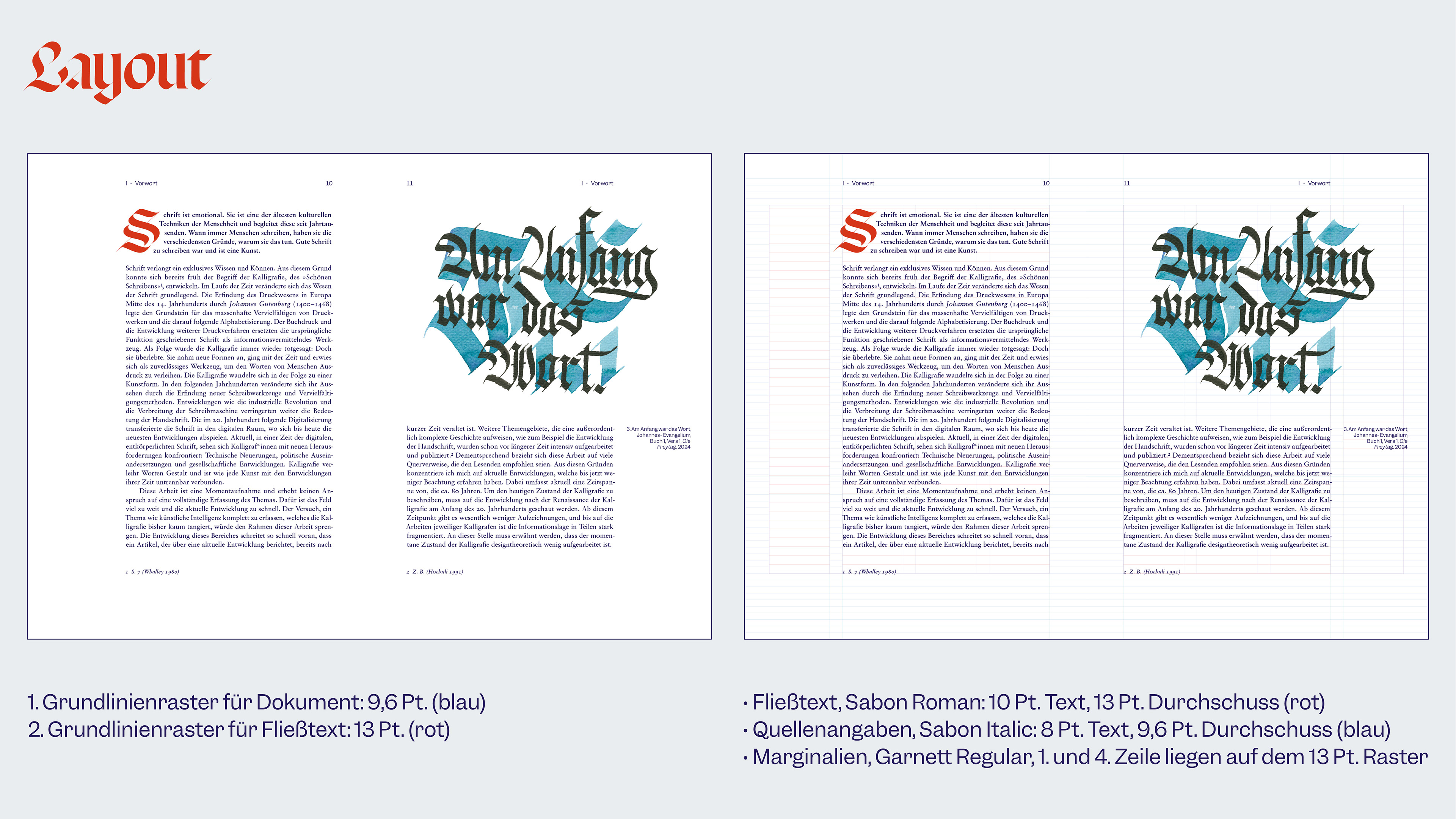

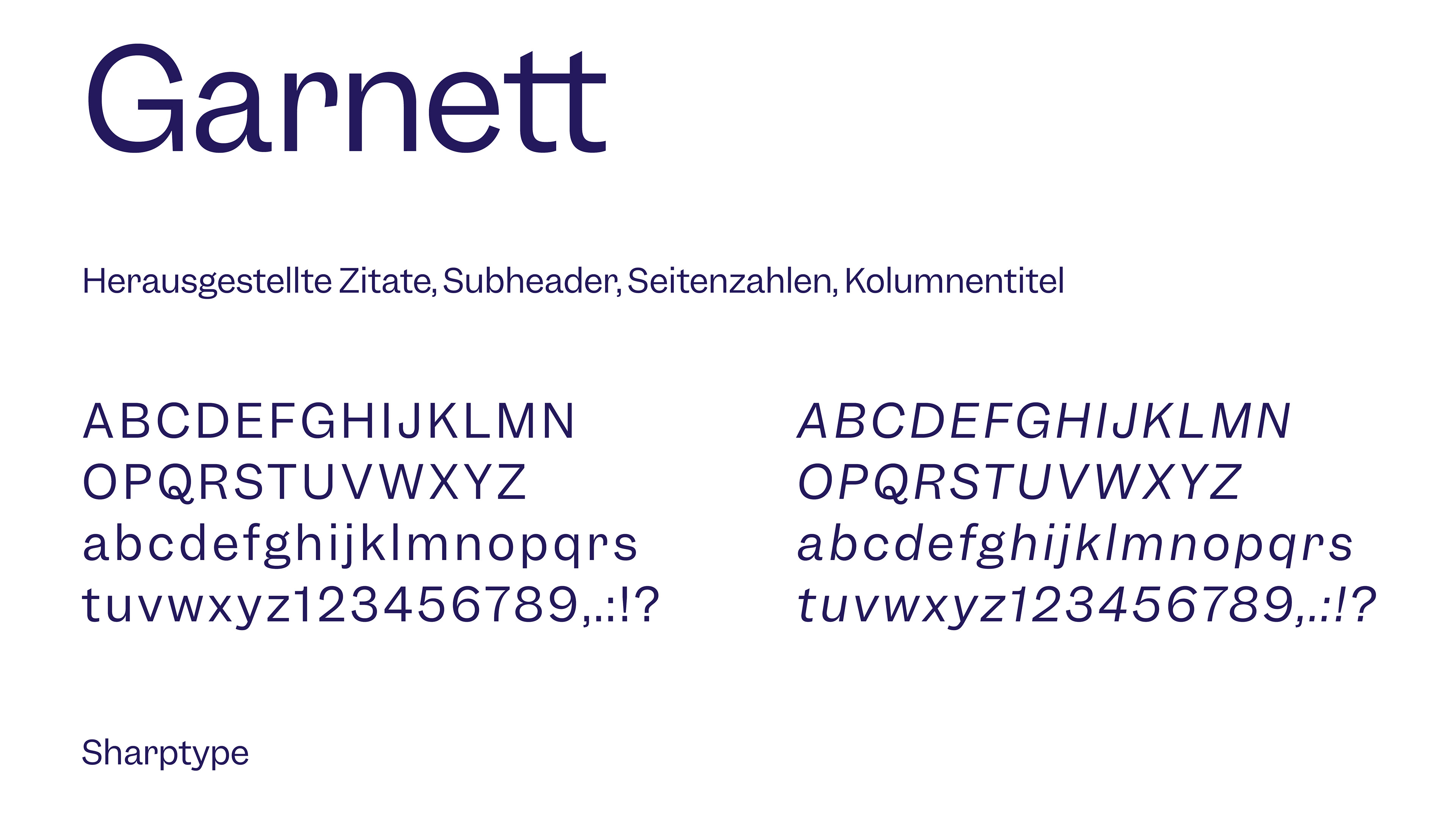
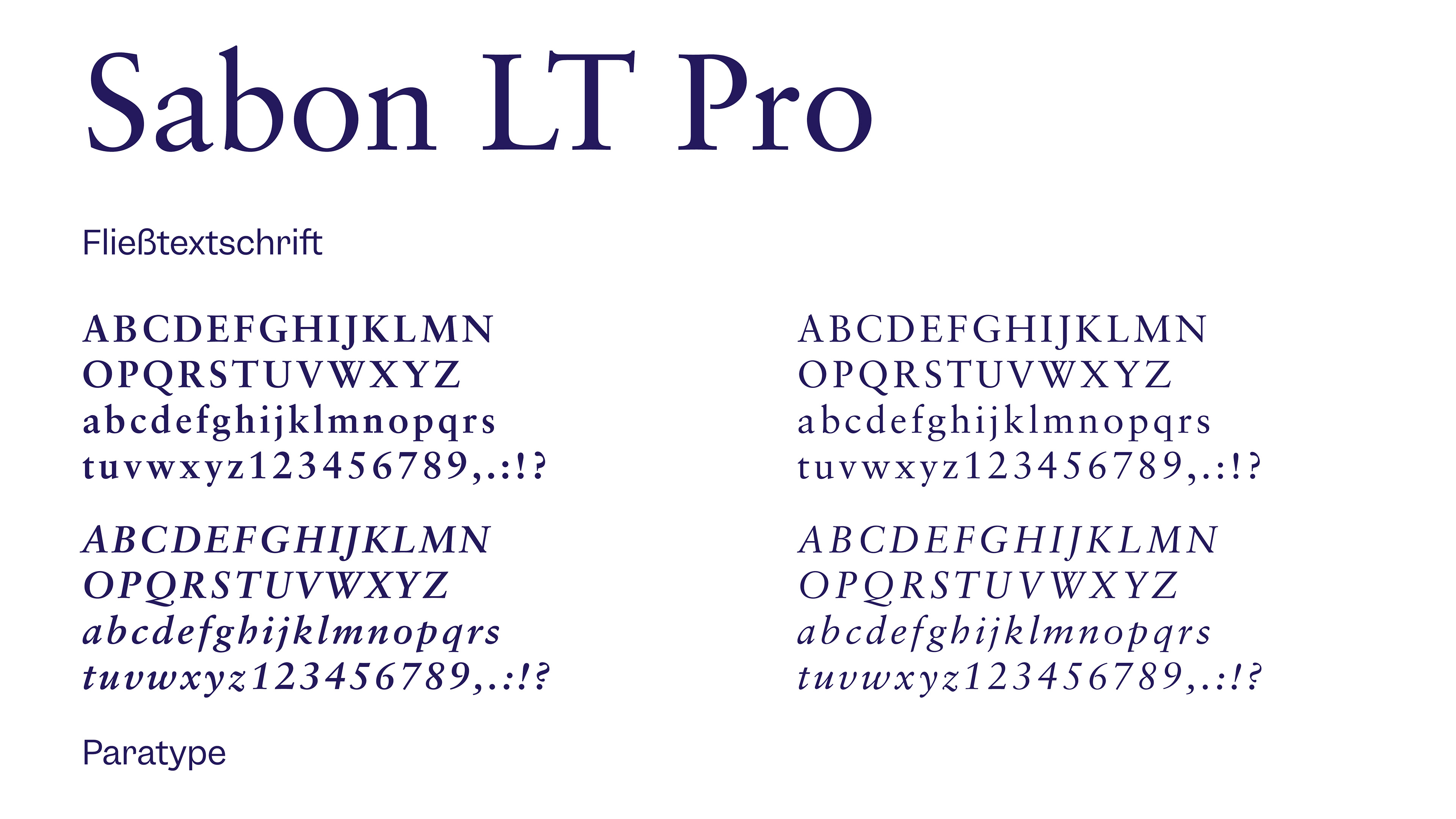
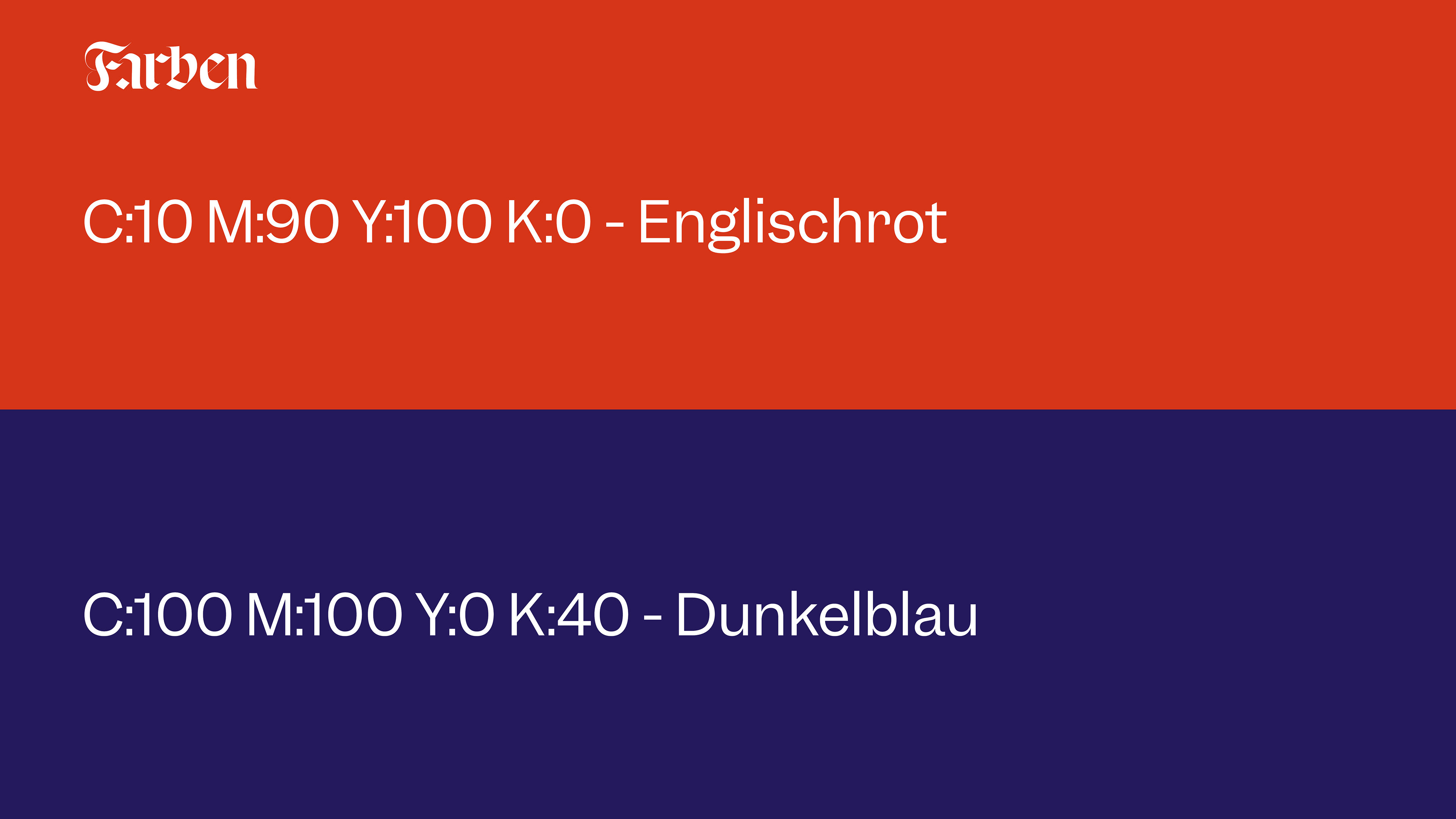
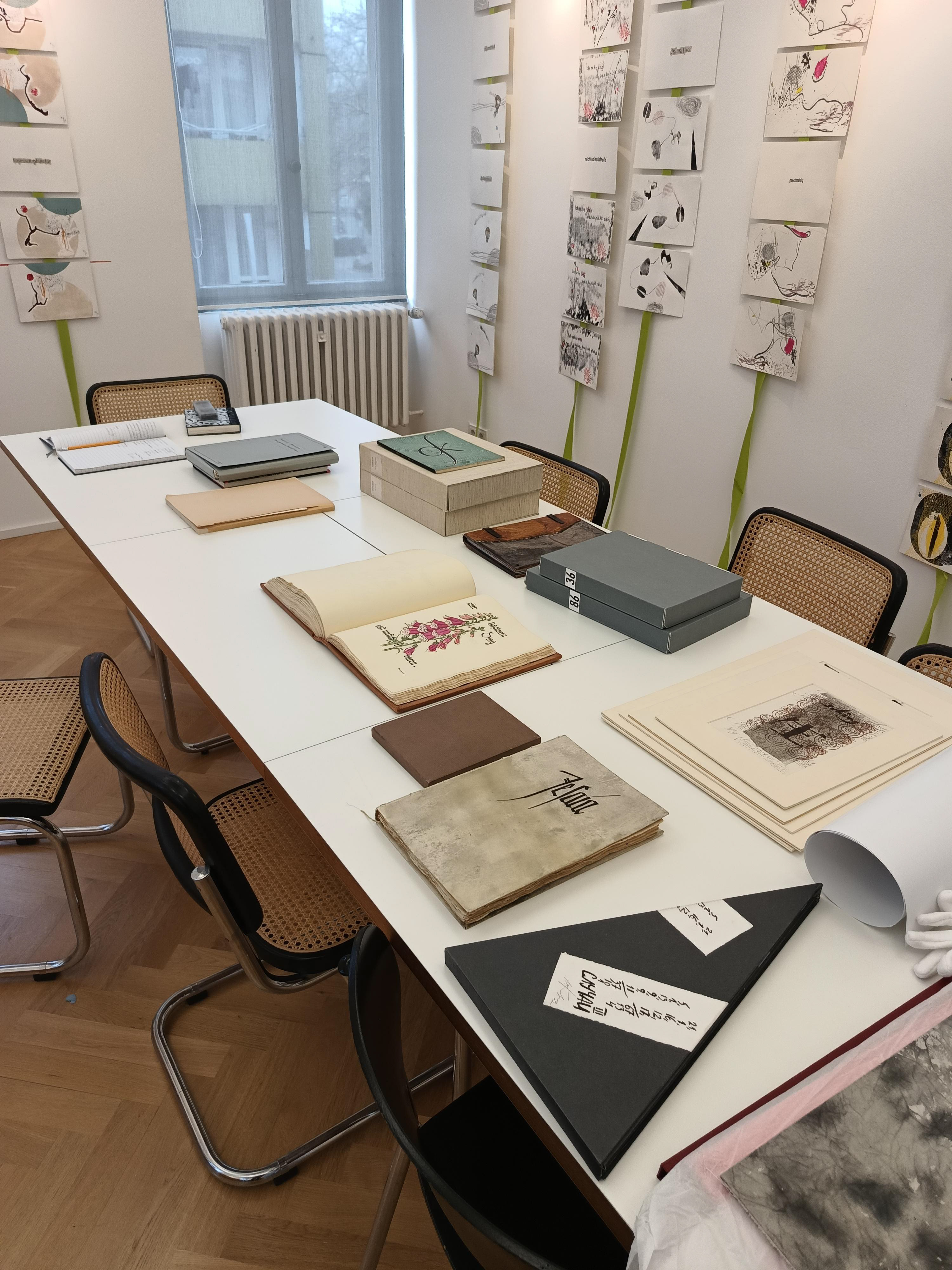
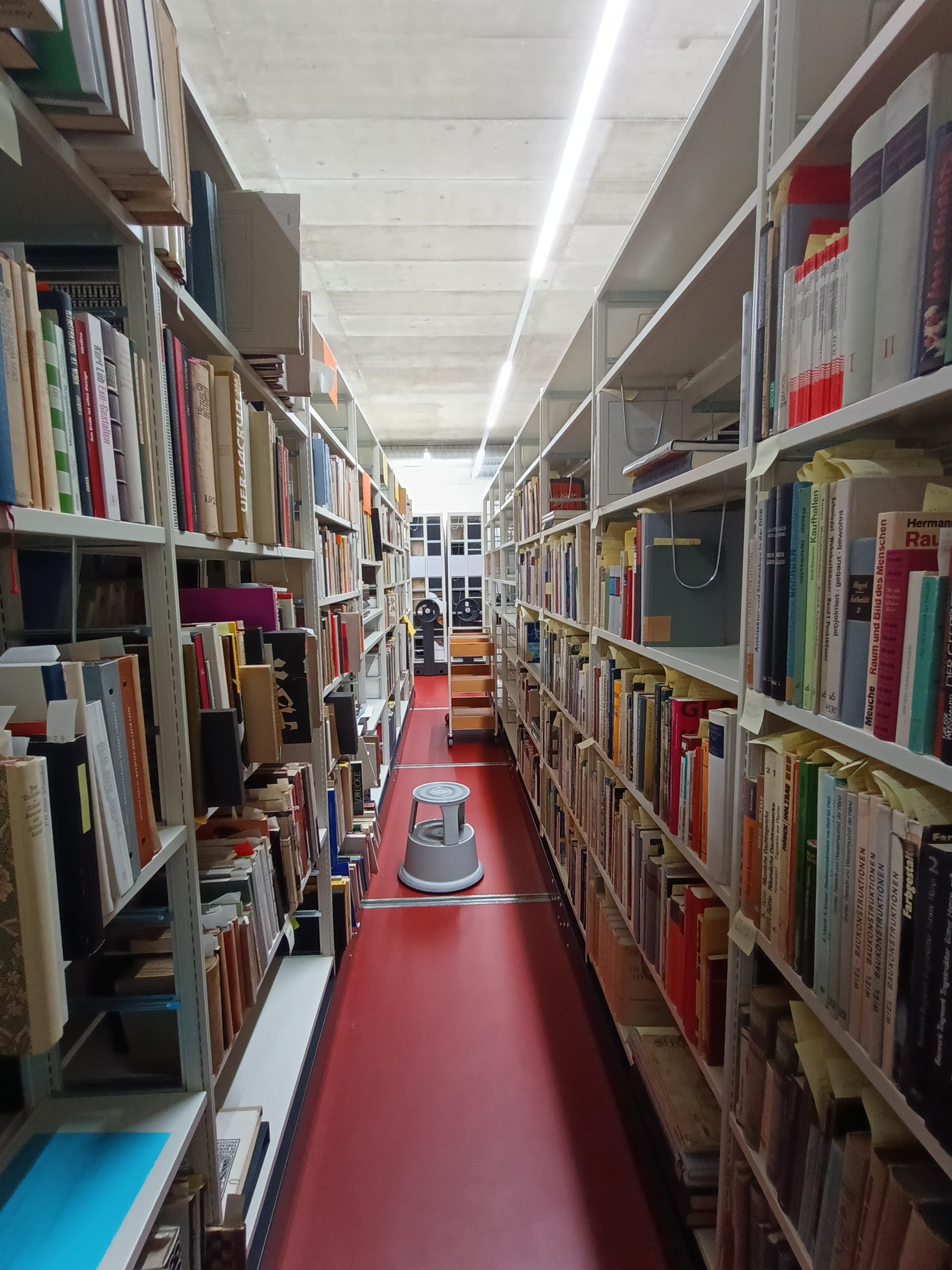
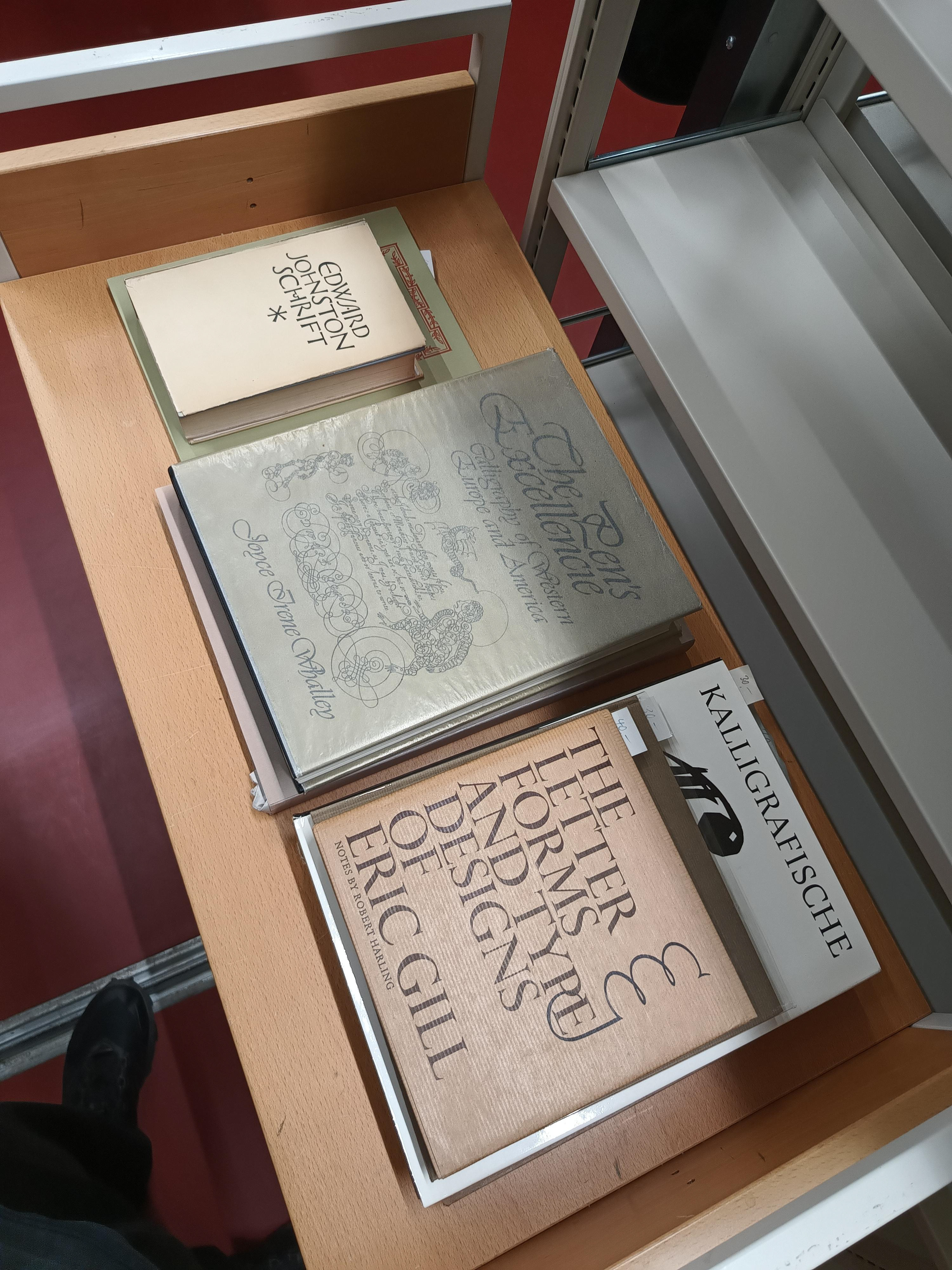

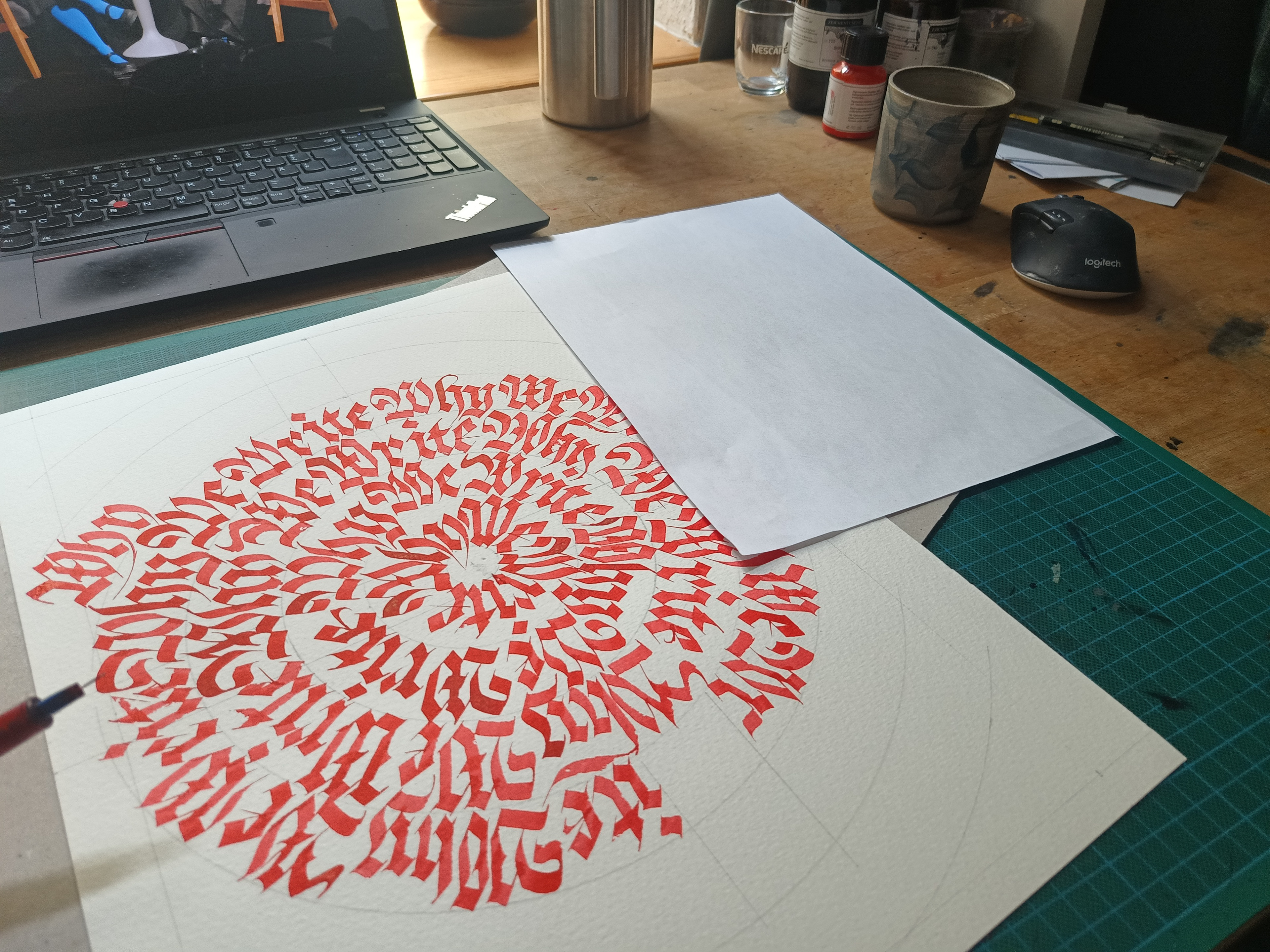
Die Recherche zur Diplomarbeit war ein komplexes Unterfangen. Besuche in Archiven, die Vernetzung mit Kalligraf*innen aus dem In- und Ausland und das Führen von Interviews bescherten mir über den Verlauf der Arbeit ein gänzlich neues Netzwerk. Im Verlauf der Arbeit wechselte ich zwischen einer Vielzahl an Rollen, von Design-Forscher, Buchgestalter, Kalligraf und Journalist.
Die Arbeit war mir eine Freude - eine wahre "Labour of Love". Ich bin auf die Zukunft gespannt.
Writing is emotional. It is one of the oldest cultural techniques of mankind and has been with us for thousands of years. Writing well was and is an art. Writing requires exclusive knowledge and skill. For this reason, the concept of calligraphy, or ‘beautiful writing’, developed early on.
The invention of printing in the Middle Ages replaced the original function of written script as a tool for conveying information. Subsequently, calligraphy was repeatedly declared dead. But it survived. It took on new forms, moved with the times and proved to be a reliable medium for giving form to people's words. Calligraphy evolved into an art form.
In the following centuries, its appearance changed due to the invention of new writing tools and reproduction methods. Developments such as the industrial revolution and the invention of the typewriter reduced the importance of handwriting. The digitalisation of the 20th century transferred writing into the digital space, where the latest developments are still taking place today. In an era of digital, disembodied writing, calligraphers are confronted with new challenges.
The aim of this diploma thesis is to analyse calligraphy from a design-theoretical perspective. The book comprises 292 pages with 147 illustrations, ranging from historical illustrations to the author's own work.
Definitions of what calligraphy actually is and how lettering is created are developed in 11 chapters. Special attention is paid to the developments of the art form in the 20th century and what is happening today in comparison. The connections to related fields such as lettering and typography are revealed and analysed.
Definitions of what calligraphy actually is and how lettering is created are developed in 11 chapters. Special attention is paid to the developments of the art form in the 20th century and what is happening today in comparison. The connections to related fields such as lettering and typography are revealed and analysed.
Furthermore, aspects such as the economic and political dimensions of writing are explored and categorised. The author's personal views are limited to Chapter 9, Calligraphy as an art form.
The thesis could only be written in this form thanks to the co-operation of many people involved. The calligraphers Gottfried Pott, Paul Antonio and Tobias David Albert contributed their knowledge in interviews and helped to clarify questions that were difficult to answer. Many calligrapher friends and the estates of deceased calligraphers agreed to provide work as well.
The thesis was supervised by Prof. Hanka Polkehn and Prof. Björn Kernspeckt from the Communication Design and Media degree programme at Wismar University of Applied Sciences.
In the future, the thesis will be published after a further revision. Further thematic and design revisions are planned beforehand. A translation into English is also planned.
The thesis could only be written in this form thanks to the co-operation of many people involved. The calligraphers Gottfried Pott, Paul Antonio and Tobias David Albert contributed their knowledge in interviews and helped to clarify questions that were difficult to answer. Many calligrapher friends and the estates of deceased calligraphers agreed to provide work as well.
The thesis was supervised by Prof. Hanka Polkehn and Prof. Björn Kernspeckt from the Communication Design and Media degree programme at Wismar University of Applied Sciences.
In the future, the thesis will be published after a further revision. Further thematic and design revisions are planned beforehand. A translation into English is also planned.
The design of the book is typographically classic. The font and images run in a grid that follows Tschichold's classic typeface. The headline font is Respira Black by Sharptype. The labelling font is Garnett by Connor Davenport. Body text and footnotes were designed using Sabon LT Pro. These are also in the colour dark blue. With the exception of illustrations, the entire work is designed in the colours English red and dark blue.
The research for my thesis was a complex endeavour. Visits to archives, networking with calligraphers from Germany and abroad and conducting interviews gave me a completely new network over the course of the work. In the course of the work, I switched between a variety of roles, from design researcher, book designer, calligrapher and journalist.
The work was a joy - a true labour of love. I am excited about the future.
The work was a joy - a true labour of love. I am excited about the future.